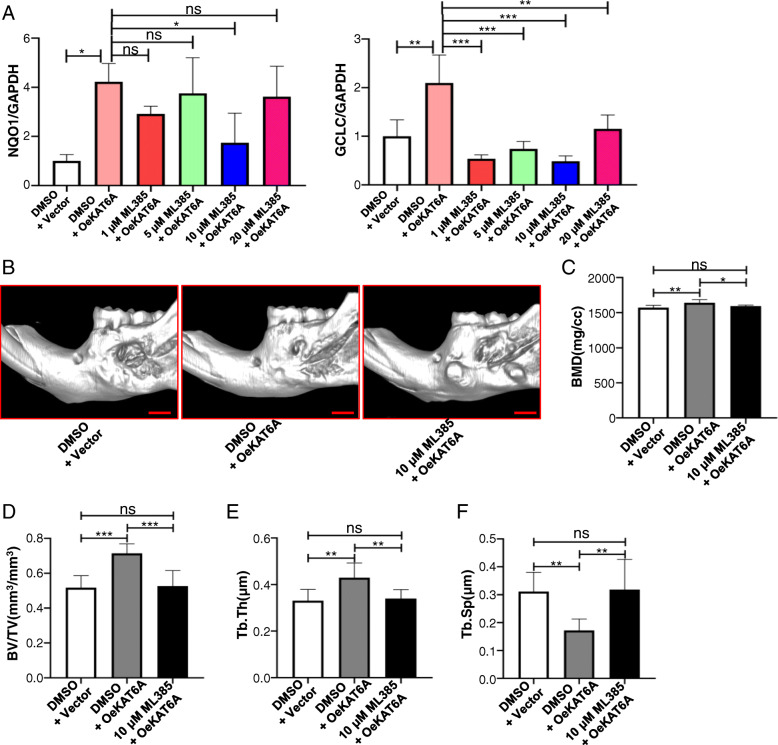Fig. 5.
KAT6A regulated osteogenesis of OBMSCs through Nrf2/ARE signaling pathway. a OBMSCs were treated with “DMSO + vector” or “DMSO + KAT6A plasmid” or KAT6A plasmid with 1 μM, 5 μM, 10 μM, or 20 μM ML 385 in sheet-induction medium for 7 days, then qRT-PCR was performed to explore the expressions of GCLC and NQO1 (n = 3). b OBMSCs were treated with “DMSO + vector” or “DMSO + KAT6A plasmid” or KAT6A plasmid with 10 μM. ML 385 in sheet-induction medium for 14 days, then the sheets were filled in the defects. After 6 weeks, micro-CT was performed to observe the defects (n = 7 to 8). c–f OBMSCs were treated with “DMSO + vector” or “DMSO + KAT6A plasmid” or KAT6A plasmid with 10 μM. ML 385 in sheet-induction medium for 14 days, then the sheets were filled in the defects. After 6 weeks, micro-CT was performed to observe the indexes of bone mineral density (BMD), bone volume/total volume (BV/TV), trabecular thickness (Tb.Th), and trabecular separation (Tb.Sp). For each index, the exact value of n in the group of “DMSO + vector” or “DMSO + KAT6A plasmid” or KAT6A plasmid with 10 μM ML 385 was 8, 7 and 6 for BMD, and 8, 7 and 7 for BV/TV, Tb.Th and Tb.Sp. Scale bar 2 mm

